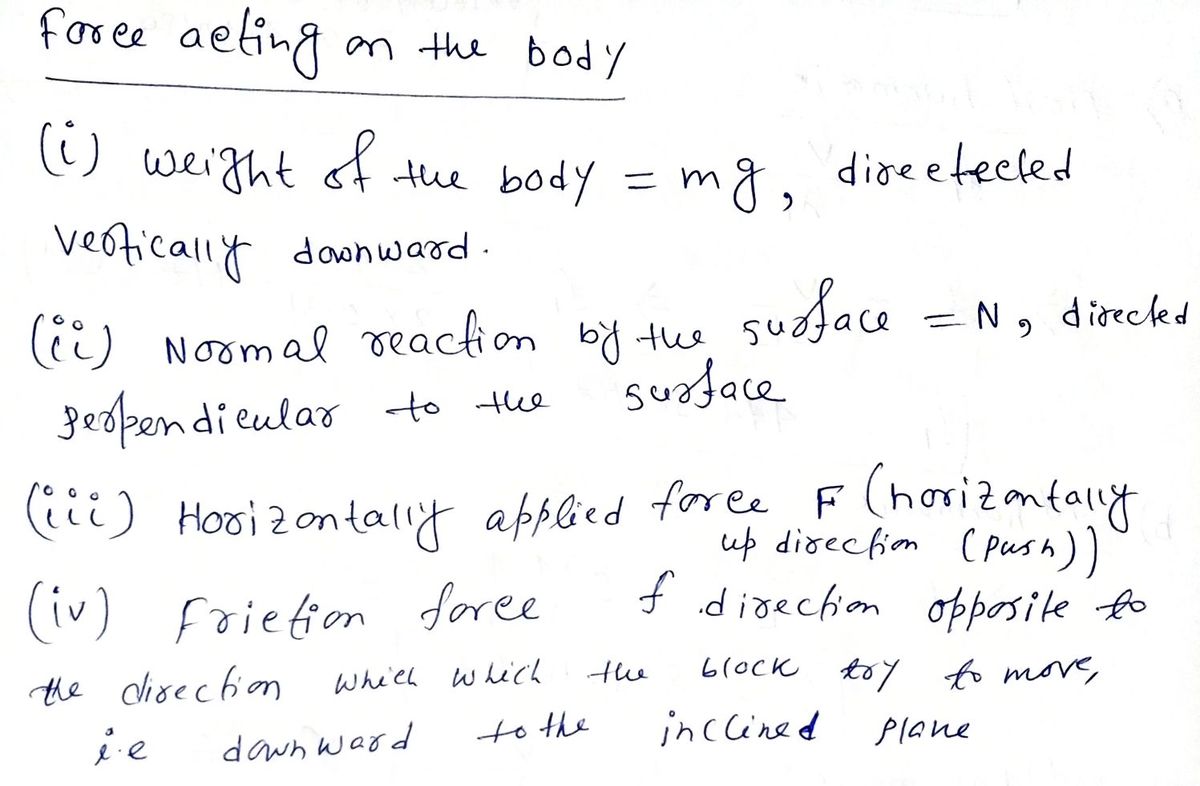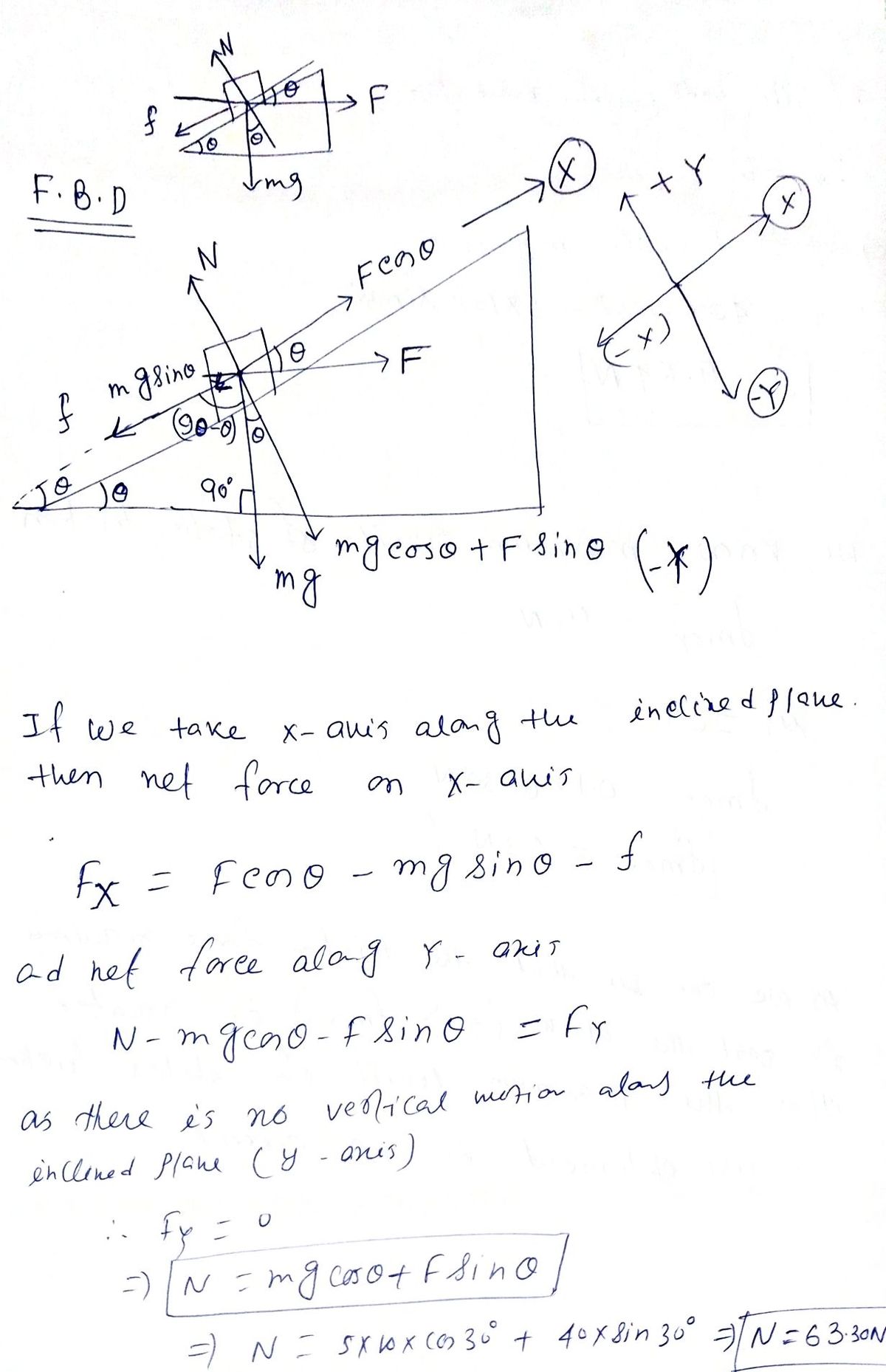1. A 5 kg body resting on a 30° inclined plane is pushed by an applied force of 40N acting horizontally. The coefficient of friction is 0.1 a) Draw a free body diagram identifying all the forces acting on the body. F.B.D. Explanations
1. A 5 kg body resting on a 30° inclined plane is pushed by an applied force of 40N acting horizontally. The coefficient of friction is 0.1 a) Draw a free body diagram identifying all the forces acting on the body. F.B.D. Explanations
Related questions
Question

Transcribed Image Text:### Problem Statement
1. A 5 kg body resting on a 30° inclined plane is pushed by an applied force of 40 N acting horizontally. The coefficient of friction is 0.1.
a) Draw a free body diagram identifying all the forces acting on the body.
#### Instructions:
- Label the Free Body Diagram (F.B.D.)
- Provide explanations for each force acting on the body.
### Explanation:
In the scenario described, the forces to consider are:
- **Gravitational Force (Weight):** Acts vertically downward with a magnitude of \( mg \), where \( m \) is the mass (5 kg) and \( g \) is the gravitational acceleration (9.8 m/s²).
- **Normal Force:** Perpendicular to the inclined plane, balancing the component of the gravitational force perpendicular to the plane.
- **Applied Force:** Acting horizontally with a magnitude of 40 N.
- **Frictional Force:** Opposing the motion along the plane, calculated using the coefficient of friction (\( \mu = 0.1 \)) multiplied by the normal force.
- **Components of Gravitational Force:** Decomposed into two components parallel and perpendicular to the plane.
To solve the problem, a free body diagram would show the body on an inclined plane with all these forces represented by arrows, each labeled accordingly.
Expert Solution
Step 1

Step 2

Step by step
Solved in 3 steps with 3 images
